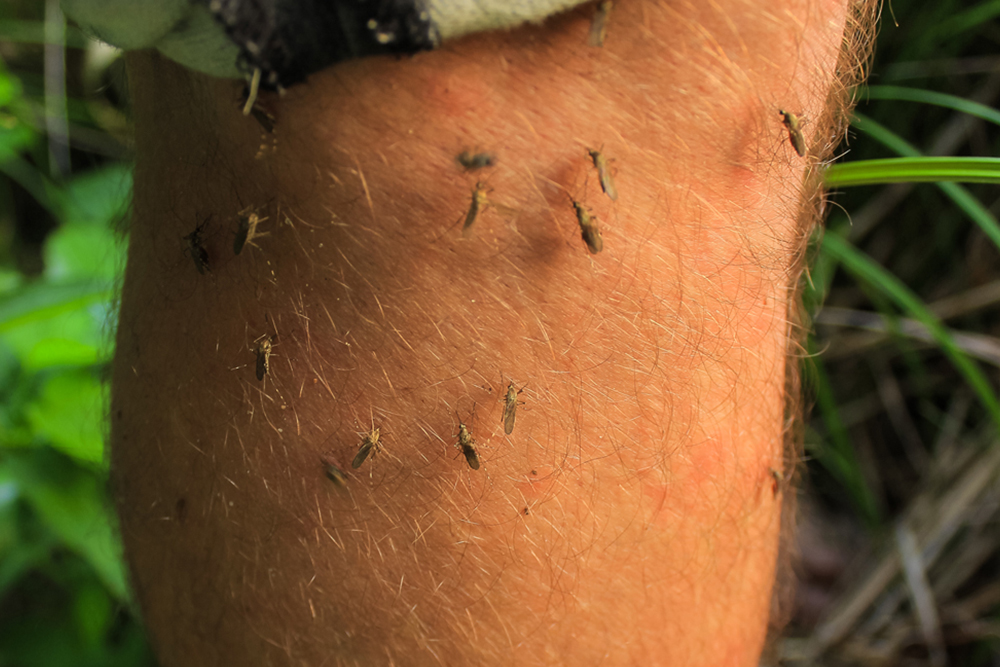Warm summer days are perfect for spending time with friends and family outdoors, but some bothersome pests want to join in the fun. Mosquitos and carpenter bees are among the most persistent unwanted guests for Missouri residents trying to enjoy their outdoor space. These pests don’t need to spoil your summer fun, though. Here’s what you need to know about mosquitos and carpenter bees, and what to do if you have an infestation.
Mosquitos
Itchy bumps with a chance of infectious disease—mosquitos are annoying pests whose bites carry a major health risk. Females bite mammals, including humans, with a tube-like mouth in order to feed on their blood. Their saliva comes into contact with your skin, which is what causes these bites to itch and can also lead to the transfer of disease. Around the world, mosquitos are responsible for the spread of West Nile Virus, malaria, yellow fever, dengue, zika, and other deadly diseases.
How To Treat For Mosquitos
The best way to curb the mosquito population in your yard is to prevent them from multiplying. They lay eggs in stagnant water, so be mindful of leaving birdbaths, watering cans, and kiddie pools unattended. Also check for areas with poor drainage that are prone to flooding or collecting rainwater. If you keep your yard free of stagnant water, mosquitos will have a harder time reproducing.
Our pest control experts also have two active treatment options for eliminating a mosquito problem. In addition to helping you identify and eliminate places on your property where these pests may be reproducing, we can apply larvicide treatment to these problem spots as needed. We also utilize a barrier treatment on areas where mature mosquitos shelter, such as bushes and other foliage.
Carpenter Bees
Carpenter bees are not just a nuisance because they like to hover around humans—they can also do a lot of damage, especially to cedar siding and decks. They are aptly named because they bore into wood to nest, lay eggs, and overwinter. If you haven’t already noticed them hovering around your house, round holes in wood porches and siding are a clear sign that you have an infestation. Unless you nip this problem in the bud, bees will return year after year to reuse these tunnels, boring deeper into your home and threatening its structural integrity.
Carpenter bees can be distinguished from bumblebees both visually and by their behavior. The former have a shiny abdomen, whereas bumblebees’ are hairy and yellow. While bumblebees group together in a central colony or hive, carpenter bees are individualistic and nest separately. Female carpenters are less likely to sting and will only do so when provoked, but the stinger-free male carpenters still like to hover frighteningly close to humans, which can be both irritating and intimidating.
How To Treat For Carpenter Bees
Many of these characteristics make carpenter bees difficult to exterminate. Multiple strategies must be employed at strategic times to effectively eliminate the problem. Our professional pest control experts will help you at each step of the way. This includes getting rid of existing bees, filling old galleries to prevent them from returning the next year, and making your home a less attractive target for potential nesters.
Missouri Pest Control Experts
Are mosquitos or carpenter bees preventing you from enjoying your outdoor space? Call McCarthy Pest & Termite Control today! With our six-point inspection process, we’ll determine the best method for treating your summer pest problem once and for all.



